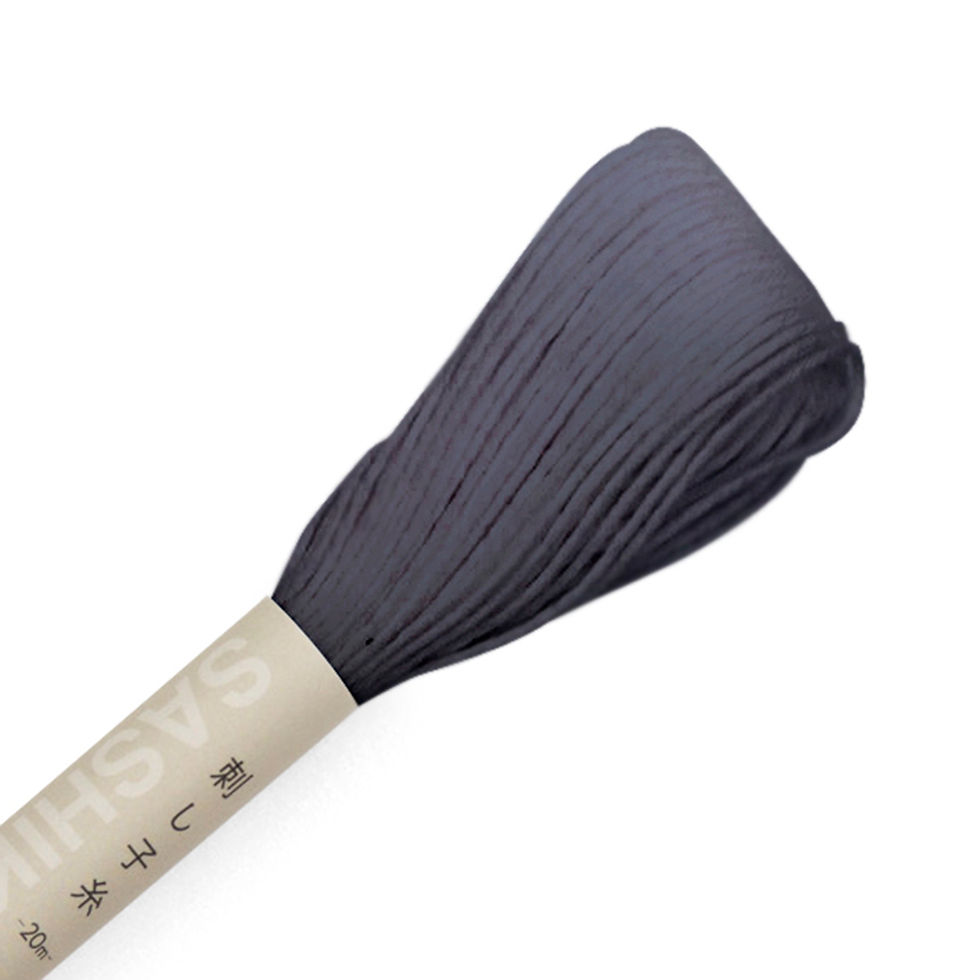This designer panel is by Ky Fujita for QH Textiles, taking hanafukin panels in a new direction, while staying traditional. This contemporary hitomezashi (one stitch sashiko) panel covered with delicate snowflakes brings a beautiful new design to your stich repertoire. Straight lines of running stitch intersect to create the pattern. Please see my stitching suggestions below for ways to stitch this design to best advantage. Hand printed in Japan.
It is a 'hana fukin' with literally means 'flower cloth' and printed on natural greige 85% cotton, 15% linen fabric. Each panel is supplied in one piece with a plain area the same size attached, because they are designed to be stitched through both layers and the edges turned in to make a little cloth, but you can stitch the printed layer separately (as I often do). They may be stitched with a doubled or single thread (or a mixture of both, for an interesting effect), in coloured threads, or white for a very minimalist contemporary look. Any of my medium sashiko threads would be ideal for these panels, or use the finer sashiko threads doubled.
These hand printed designer panels are more expensive than the other hanafukin I sell, but the patterns are so beautiful, I wanted to start selling them! I have more more designs by Ky Fujita in stock.
Sashiko Cloth by QH Textiles (Australia)
Printed with water-soluble ink - marks wash out
Composition : 85% cotton, 15% linen
Individual Cloth Size : Approx. 30cm x 60cm (Finished size : 30cm x 30cm)
This fabric is a slightly finer weave than the Olympus hanafukin sarashi cotton.
#KF2021-25 'snowflakes' designer hanafukin sashiko samplergreige
Hanafukin cloths are traditionally stitched through two layers of fabric (the second layer is the plain section) but can be stitched just through one if you want to add wadding and quilt the panel after finishing the sashiko stitching. For 'quilt as you go', the plain section can be used as a backing.
To stitch through two layers, the cloth can be stitched all round and bagged out before stitching the sashiko; stitched across the short ends with right sides together, then the sashiko stitched, and finally the two selvedges turned in on each other and ladder stitched together; or the edges tucked in using a butted finished and stitched all round. Any of these can also be done after the sashiko is stitched, if you don't want the back of your stitching to be visible.
Stitching suggestions for the panel -The greige fabric would contrast well with darker or brighter coloured sashiko threads, or go for a more delicate look with white or pastels, including 100m #194 and #195, or some of the speckled or multicoloured Lecien sashiko threads. There is a basic hiomezashi tutorial on my TV & Free Stuff page that you might find useful.
Of course, if you are including this panel with others in a quilt or wallhanging, you could take your colour inspirations from the other panels. Whatever colours you choose, remember the lightest colours, white especially, will almost disappear against the greige fabric, while colours like deep red or green will create a bright accent in your stitching.The whole panel can be stitched in a single medium sashiko thread or with some threads doubled for a bolder effect. If you wish to stitch in just one colour, try combining the 20m medium sashiko thread with the 80m fine sashiko thread. The colours are identical and the finer thread could be used to give a very delicate effect to the hitomezashi patterns.

































